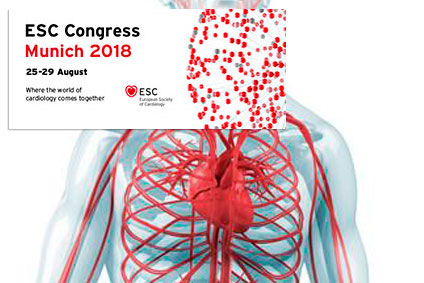Increases in the rates of revascularization and heart failure do not justify the early mortality advantage shown by treatment of the culprit artery only in patients with acute myocardial infarction and cardiogenic shock.
 The 1-year follow-up of the CULPRIT-SHOCK trial reinforces the idea of only treating the culprit artery, with an option for revascularization of significant non-culprit lesions at a later time, compared with immediate multivessel angioplasty in patients with acute myocardial infarction complicated by cardiogenic shock.
The 1-year follow-up of the CULPRIT-SHOCK trial reinforces the idea of only treating the culprit artery, with an option for revascularization of significant non-culprit lesions at a later time, compared with immediate multivessel angioplasty in patients with acute myocardial infarction complicated by cardiogenic shock.
As previously reported with the 30-day outcomes, immediate multivessel revascularization increased the risk of death or severe renal failure requiring dialysis. This difference is basically driven by an absolute 8% difference in all-cause death. Angioplasty in only the culprit artery is the preferred strategy for these patients, and it entails a change regarding our historical choice.
Read also: ESC 2018 | MATRIX: 1-Year Superiority of Transradial Access.
At 1 year, the difference in the rates of all-cause death was no longer significant (compared with 30-day figures), but there remained a strong trend favoring culprit-only treatment (50.0% vs. 56.9%; relative risk [RR]: 0.88; 95% confidence interval [CI]: 0.76-1.01). There was also a borderline significant difference in death or recurrent infarction favoring culprit-only treatment (50.9% vs. 58.4%; RR: 0.87; 95% CI: 0.76-1.00).
The results, published simultaneously in the New England Journal of Medicine (NEJM), also show that culprit-only treatment is associated with increases in revascularization (32.3% vs. 9.4%; RR: 3.44; 95% CI: 2.39-4.95) and hospitalization due to heart failure (5.2% vs. 1.2%; RR: 4.46; 95% CI: 1.53-13.04). Such raise in the number of hospitalizations for heart failure was a surprise for all investigators, but it still does not warrant multivessel treatment, given the 30-day results confirmed by the 1-year outcomes.
Read also: ESC 2018 | MARINER: Rivaroxaban as Thromboprophylaxis after Hospitalization.
These results led to the change made to the European guidelines (simultaneously published), which include a class III recommendation against immediate multivessel revascularization in patients with cardiogenic shock. Complete revascularization should be carried out later on.
Original title: One-Year Outcomes After PCI Strategies in Cardiogenic Shock.
Reference: Presented by Holger Thiele at the European Society of Cardiology 2018 Congress and simultaneously published in N Engl J Med. 2018;Epub ahead of print.
Get the latest scientific articles on interventional cardiologySubscribe to our weekly newsletter
We are interested in your opinion. Please, leave your comments, thoughts, questions, etc., below. They will be most welcome.





